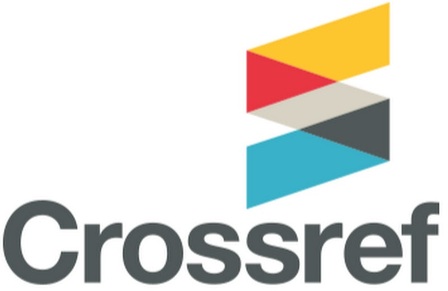THE CONSUMER’S ATTITUDES TOWARDS WEB ADVERTISING ON TOURISM MALAYSIA WEB ADVERTISEMENT: LITERATURE REVIEW AND HYPOTHESIS
(1) Universiti Utara Malaysia
(2) Universiti Utara Malaysia
(3) The Federal Polytechnic
(*) Corresponding Author
Abstract
Advertising has grown exponentially over the last 10 years. In general, advertising can be defined as the activity of a profession of producing information for promoting the sale of commercial products or services in so many ways, including the World Wide Web. For instance, advertising via the web has received much attention from people all over the world. Web advertising, in particular, has big implications to the global businesses because of wide accessibility strategies throughtout the world. Therefore, this study is carried out to identify the antecedents that influenced consumer’s attitudes towards Tourism in Malaysia web advertising that is widely available. Based on a review of the existing literature in a range of fields, this study proposes a conceptual model of the positive relationships between customer’s atitude with informativeness, entertainment, credibility, economic value, interactivity and materialism. The proposed conceptual model is developed based on the Elaboration Likehood (ELM). Tourism Malaysia strongly rides on its slogan ‘Malaysia Truly Asia” that signifies the ever-changing and growing needs for the future. Furthermore, Tourism Malaysia web advertising also can affect the consumer’s decision-making process and behavior. The researcher expects this research to make several theoretical, managerial and policy contributions. For instance, the tourism promotional board which wants to change the customer’s attitude needs to take into consideration the influence factors such as informativeness, entertainment, credibility, economic value, interactivity and materialism for the web adverstisement.
Keywords
Full Text:
PDFReferences
Adler, R. B., & Rodman, G. (2000) Understanding human communication, (7th edn). Ft Worth, TX:Harcourt College Publishers.
Andersen, S.O. & Zaelke, D. (2003), Industry Genius: Inventions and People Protecting the Climate and Fragile Ozone Layer, Greenleaf Publishing, Sheffield.
Azeem, A., & Haq, Z. (2012). Perception towards Internet Advertising : A study with Reference to Three Different Demographic Groups. Journal Business and Management Research: An International Journal, 4(1), 28-45.
Bassam Mahmoud, A. (2014). Linking information motivation to attitudes towards Web advertising. Journal of Islamic Marketing, 5(3), 396-413.
Belch, G. & Belch, M. (2007) Advertising and promotion: An integrated marketing communication perspective. CA:McGraw-Hill.
Bezjian-Avery, A., Calder, B., & Iacobucci, D. (1998). New Media Interactive Advertising vs. Traditional Advertising. Journal of Advertising Research, 1-10.
Bellman, S., & Rossiter, J. (2004). The Website Schema. Journal Of Interactive Advertising, 4(2), 38-48.
Biswas, A., Olsen, J. and Carlet, V. (1992), “A comparison of print advertisements from the United States and France”, Journal of Advertising, 21(4), 73-81.
Boudreau, M., & Watson, R. (2006). Internet Advertising Strategy Alignment. Internet Research, 16(1), 23-37.
Bracket, L.D. & Carr, B.N. (2001). Cyberspace advertising vs other media: Mature student attitudes. Journal of Advertising Research, 41(5), 23-32.
Bryman, A. (2006). Integrating Quantitative and Qualitative Research: How is it done? Qualitative Research, 6(1), 97-113.
Calfee, J., & Ringold, D. (1994). The 70% majority: enduring consumer beliefs about advertising. Journal of Public Policy & Marketing, 13, 228-238.
Choon Ling, K., Hoi Piew, T., & Teck Chai, L. (2010). The Determinants of Consumers’ Attitude towards Advertising. Canadian Social Science, 6(4), 114-126.
Chen, Q., Clifford, S., & Wells, W. (2002). Attitude Toward The Site II: New Information. Journal Of Advertising Research, 42(2), 33-45.
Chen, Q., & Wells, W.D. (1999). Attitude toward the site. Journal of Advertising Research, 40(5), 27-37.
Coyle, J.R., & Thorson, E. (2001). The effects of progressive levels of interactivity and vividness in web marketing sites. Journal of Advertising, 41(3), 65-77
Dayal, S., Landesberg, H. and Zeisser, M. (2000), “Building digital brands”, The McKinsey Quarterly, 2, 42-51.
Donsbach, W. (2008). The International Encyclopedia of Communication. Malden, MA: Blackwell Pub.
Donthu, N. (2001). Does Your Web Site Measure Up? Marketing Management, 10(4), 39-32.
Ducoffe, R.H. (1996). Advertising value and advertising on the Web. Journal of Advertising Research, 36(5), 21-35.
Elliott, M., & Speck, P. (2005). Factors that Affect Attitude toward a Retail Web Site. Journal of Marketing Theory And Practice, 13(1), 40-51.
Eze, U., & Lee, C. (2012). Consumers’ Attitude towards Advertising. International Journal of Business and Management, 7(13).
Goldsmith, R., & Lafferty, B. (2002). Consumer response to Web sites and their influence on advertising effectiveness. Internet Research, 12(4), 318-328.
Goodwin, L. D., & Leech, N. L.(2006). Understanding correlation: Factors that affect the size of r. The Journal of Experimental Education, 74(3), 249-266.
Hofacker, C., & Murphy, J. (1998). World Wide Web banner advertisement copy testing. European Journal of Marketing, 32(7/8), 703-712.
Hootman, R. (1992). Manual on descriptive analysis testing for sensory evaluation. Philadelphia, PA: ASTM.
Hofstede, G. (2001), Culture’s Consequences: Comparing Values, Behaviors, Institutions, and Organizations Across Nations, 2nd ed., Sage, Thousand Oaks, CA.
Ida E. Berger, Peggy H. Cunningham, and Robert V. Kozinets (1999) ,"Consumer Persuasion Through Cause-Related Advertising", in NA - Advances in Consumer Research Volume 26, eds. Eric J. Arnould and Linda M. Scott, Provo, UT : Association for Consumer Research, Pages: 491-497.
Jackson, S.L. (2009). Research Methods and Statistics: A Critical Thinking Approach 3rd edition. Belmont, CA: Wadsworth.
Kolter, P. (2000). Marketing management. Englewood Cliffs, NJ: Prentice Hall.
Korgaonkar, P., & Wolin, L. (2002). Web usage, advertising, and shopping: relationship patterns. Internet Research, 12(2), 191-204.
Korgaonkar, P., Silverblatt, R., & O’Leary, B. (2001). Web advertising and Hispanics. Journal of Consumer Marketing, 18(2), 134-152.
Krejcie, R.V., & Morgan, D.W., (1970). Determining Sample Size for Research Activities. Educational and Psychological Measurement.
Kwon, O., Kim, C., & Lee, E. (2002). Impact of website information design factors on consumer ratings of web-based auction sites. Behaviour & Information Technology, 21(6), 387-402.
Li, N., & Zhang, P. (2002). Consumer Online Shopping Attitudes and Behavior :An Assessment of Research. Eighth Americas Conference on Information Systems, 508-514.
Lutz, RJ. 1985. Affective and Cognitive Antecedents of Attitude toward the Ad : A conceptual framework, In Psychological Processes and Advertising Effects :Theory, Research and Application, eds. L.F. Alwitt and A.A. Mitchell 45-46. Hillsdale: Lawrence Erlbaum Associates.
Mackenzie, S.B. and Lutz, R.L. (1989) An empirical examination of the structural antecedents of attitude toward the ad in an advertising pre testing context. Journal of Marketing 53 (April): 48–65.
Malaysia, H. (2014). The Official Home of Tourism Malaysia. Tourism.com.my. Retrieved 28 April 2015, from http://www.tourism.com.my
Malina, M., Norreklit, H., & Selto, F. (2011). Lessons learned: advantages and disadvantages of mixed method research. Qualitative Research In Accounting & Management, 8(1), 59-71.
McQuail, D. (1983) Mass Communication Theory: An Introduction. London: Sage Publication.
McMillan, S., Hwang, J., & Lee, G. (2003). Effects of structural and perceptual factors on attitudes toward the website. Journal of Advertiisng Research, 43(4), 400-409.
Mehta, A. (2000), “Advertising attitudes and advertising effectiveness”, Journal of Advertising Research, Vol. 40 No. 3, pp. 67-72.
Metin, I., & Metin Camgoz, S. (2011). The Advances in the History of Cognitive Dissonance Theory. International Journal of Humanities And Social Science, 1(6), 1-6.
Munusamy, J., & Wong, C. H. (2007). Attitude towards advertising among students at private higher learning institutions in Selangor. UniTAR e-Journal 3, 31-51.
Mukaka, M.M. (2012). A Guide To Appropriate Use Of Correlation Coefficient In Medical Research. Malawi Medical Journal, 24(3), 69-71.
Norzalita Abd. Aziz & Ahmad Azmi M. Ariffin. (2010).Exploring Consumers Attitude towards Web Advertising and its Influence on Web Ad Usage in Malaysia. Jurnal Pengurusan, 31, 55-63.
O’Cass, A. and Pecotich, A. (2005), “Exploring the dynamics of voter behavior and influence processes in electoral markets: a consumer behavior perspective”, Journal of Business Research, 58(4), 406-13.
Paton, R., & Karunaratne, N. (2009). Engagement and innovation: the Tourism case. VINE, 39(4), 280-297.
Patsioura, F., Vlachopoulou, M., & Manthou, V. (2009). A new advertising effectiveness model for corporate advertising web sites. Benchmarking, 16(3), 372-386.
Perloff, R.M. (1993). The Dynamics of Persuasion, Lawrence Erlbaum Associates, Hillside, NJ.
Petty, R., Cacioppo, J., & Schumann, D. (1983). Central and Peripheral Routes to Advertising Effectiveness: The Moderating Role of Involvement. Journal of Consumers, 10(2), 135.
Petty, R.E. & Cacioppo, J.T. (1986) Communication and Persuasion: Central and Peripheral Routes to Attitude Change. New York: Springer.
Pollay, R.W. & Mittal, B. (1993), Here’s the beef: factors, determinants, and segments in consumer criticism of advertising, Journal of Marketing, 57( 3), 99-114.
Prendergast, G., Liu, P. & Poon, D.T.Y. (2009). A Hong Kong study of advertising credibility. Journal of Consumer Marketing, 26(5), 320-329.
Rosenberg, M.J., (1960). An analysis of affective–cognitive consistency. In: Hovland, C.I., Rosenberg, M.J. (Eds.), Attitude Organization and Change. Yale University Press Inc., CT, 15–64.
Richards, J. and Curran, C. (2002), Oracles on advertising: searching for a definition. Journal Advertising, 31(2), 63-77.
Rowley, J. (2014). Designing and using research questionnaires. Management Research Review, 37(3), 308-330.
Saadeghvaziri, F., Dehdashti, Z., & Reza Kheyrkhah Askarabad, M. (2013). Web advertising. Journal of Economic And Administrative Sciences, 29(2), 99-112.
Saadeghvaziri, F. & Seyedjavadain, S. (2011), Attitude toward advertising: mobile advertising vs. advertising-in-general, European Journal of Economics, Finance and Administrative Sciences, 28(28), pp. 104-114.
Saeed, R., Lodhi, R., Naeem, A., Akbar, A., Sami, A., & Dustgeer, F. (2013). Consumer’s Attitude towards Internet Advertising in Pakistan. World Applied Sciences Journal, 25(4), 623-628.
Schlosser, A., Shavitt, S., & Kanfer, A. (1999). Survey of Internet User's Attitude toward Internet Advertising. Journal of Interactive Advertising, 13(3), 1-21.
Schiffman, L.G., Kanuk, L.L. & Wisenblit, J. (2010). Consumer behavior (10th ed.). New Jersey: Pearson Prentice Hall.
Stevenson, J., Bruner, G., & Kumar, A. (2000). Webpage Background and Viewer Attitudes.Journal Of Advertising Research, 40(1-2), 29-34.
Siau, K. and Shen, Z. (2003) Building customer trusts in e-mail commerce. Communications of the ACM 46(4): 91-94.
Sun, Y., Lim, K., Jiang, C., Peng, J., & Chen, X. (2010). Do males and females think in the same way? An empirical investigation on the gender differences in Web advertising evaluation. Computers In Human Behavior, 26(6).
Szymanski, D., & Hise, R. (2000). E-satisfaction: An initial Examination. Journal Of Retailing, 76(3), 309-322.
Teo, H. H., Oh, L. B., Liu, C., & Wei, K. K. (2003). An Empirical study of the effects of Interactivity on Web User Attitude. International Journal of Human-Computer Study, 58, 281-305.
Vijayasarathy, L., & Jones, J. (2000). Print and Internet catalog shopping: assessing attitudes and intentions. Internet Research, 10(3), 191-202.
Wang, Y. & Sun, S. (2010). Examining the role of beliefs and attitudes in online advertising: a comparison between the USA and Romania. International Marketing Review, 27(1), 87-106.
Wu, G. (2005). The Mediating Role of Perceived Interactivity in the Effect of Actual Interactivity on Attitude toward the Website. Journal of Interactive Advertising, 5(2), 29-39.
Yang, Z., Peterson, R.T., & Huang, L. (2001). Taking the pulse of internet pharmacies. Marketing Health Services, 21(2), 4-10.
Zhang, P., & Wang, C. (2005). An Empirical Study on Consumer's Perceived Value and Attitude towards Advertising. Proceedings of the 6Th Global Information Technology And Management (GITM) World Conference.
Zheng Zhou and Yeqing Bao (2002) ,"Users Attitudes Toward Web Advertising: Effects of Internet Motivation and Internet Ability", in NA - Advances in Consumer Research Volume 29, eds. Susan M. Broniarczyk and Kent Nakamoto, Valdosta, GA : Association for Consumer Research, Pages: 71-78.
DOI: https://doi.org/10.24123/jmb.v15i1.258
Article Metrics
Abstract view : 1288 timesPDF - 180 times
Refbacks
- There are currently no refbacks.
Copyright (c) 2018 Journal of Management and Business
This work is licensed under a Creative Commons Attribution 4.0 International License. ISSN: 1412-3789. e-ISSN: 2477-1783.
 |  |  |  |
 |  |  |  |



